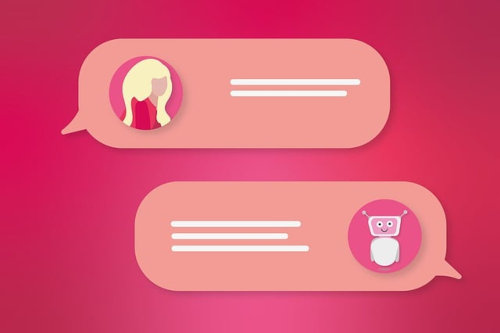Chat bots, empowered by the latest advancements in artificial intelligence (AI), have significantly reshaped the landscape of customer service, providing fast and accessible support around the clock. However, despite their widespread adoption and the convenience they offer, users often find their responses lacking in naturalness and helpfulness.

image credit: Alexandra Koch / Pixabay
The key challenge today is to refine these digital assistants so that they not only understand but also effectively anticipate and address user needs in a conversational manner.
Enhancing Syntactic Analysis
Advanced syntactic analysis can significantly enhance the way chat bots understand and generate human language. By focusing on the grammatical structures and contextual nuances, bots can be trained to produce more coherent and contextually appropriate responses. This involves not just parsing simple sentence structures but understanding complex, compound sentences that humans use in everyday conversation.
For instance, recognizing the difference between a question about a service (“What services are available?”) and a request for action (“Can you book a service for me?”) can drastically improve the effectiveness of the bot’s interactions.
Additionally, integrating advanced syntactic features allows bots to adapt their responses based on the conversation’s flow, thereby avoiding the mechanical repetition often found in lesser sophisticated systems. This could involve the bot recognizing follow-up questions related to the initial inquiry, maintaining the conversational context over a series of interactions, which greatly enhances user satisfaction by providing a seamless interaction experience?.
Utilizing NLP and Machine Learning
Natural Language Processing (NLP) coupled with machine learning forms the backbone of modern chat bot operations. These technologies allow chat bots to process and understand human speech in a way that closely mirrors human thought processes.
The continuous improvements in NLP technologies enable chat bots to handle a broader array of conversational topics and respond appropriately to nuanced requests?. Furthermore, by employing deep learning, these bots can learn from vast amounts of interaction data, improving their ability to engage in meaningful dialogues without human intervention.
The incorporation of machine learning also ensures that with each interaction, the bot becomes better at predicting user intent, which increases the relevance of its responses. This self-improving technology framework supports a bot’s ability to evolve over time, adapting to new user behaviors and changing trends in language use.
This adaptability is crucial for maintaining an engaging user experience that feels both personal and contextually aware.
Intents and Entities
Identifying intents and entities accurately is crucial for delivering precise responses. Intents capture the purpose of the user’s message, while entities represent the detailed specifics within that message, such as time, location, or quantities. This distinction helps the chat bot tailor its responses more effectively, significantly enhancing the accuracy and relevance of its interactions.
For example, if a user states, “I want to book a hotel in New York next Friday,” understanding ‘New York’ as the location entity and ‘next Friday’ as the time entity allows the bot to provide tailored options.
Moreover, by enriching the chat bot’s understanding of intents and entities, developers can program the bot to handle a diverse range of scenarios and requests, from simple FAQs to complex transactional commands. This not only streamlines the interaction process but also reduces the cognitive load on the user, making the interaction smoother and more enjoyable.
Continuous Learning and Feedback
For a chat bot to remain effective, it must continuously learn from user interactions. This is achieved through the collection and analysis of feedback, which helps identify areas where the chat bot performs well and areas where improvement is necessary. Such ongoing adjustments are vital for keeping the chat bot up-to-date with the latest user preferences and communication styles.
The feedback loop also allows for the refinement of the chat bot’s decision-making algorithms. By understanding which types of responses satisfy users and which do not, developers can fine-tune the bot’s algorithms to better meet user expectations. This process of continuous improvement helps maintain a high level of user engagement and satisfaction, ensuring that the chat bot remains an effective tool for customer interaction over time?.
Conclusion
Enhancing chat bots is an ongoing process that involves sophisticated syntactic analysis, the application of advanced NLP and machine learning techniques, and a deep understanding of user intents and entities. By focusing on these critical areas, developers can create chat bots that not only understand the complexities of human language but also engage in meaningful, satisfying interactions with users.
As AI technology continues to evolve, the potential to develop even more intuitive and helpful chat bots becomes increasingly within reach, promising a future where digital assistants can provide genuinely human-like support.


